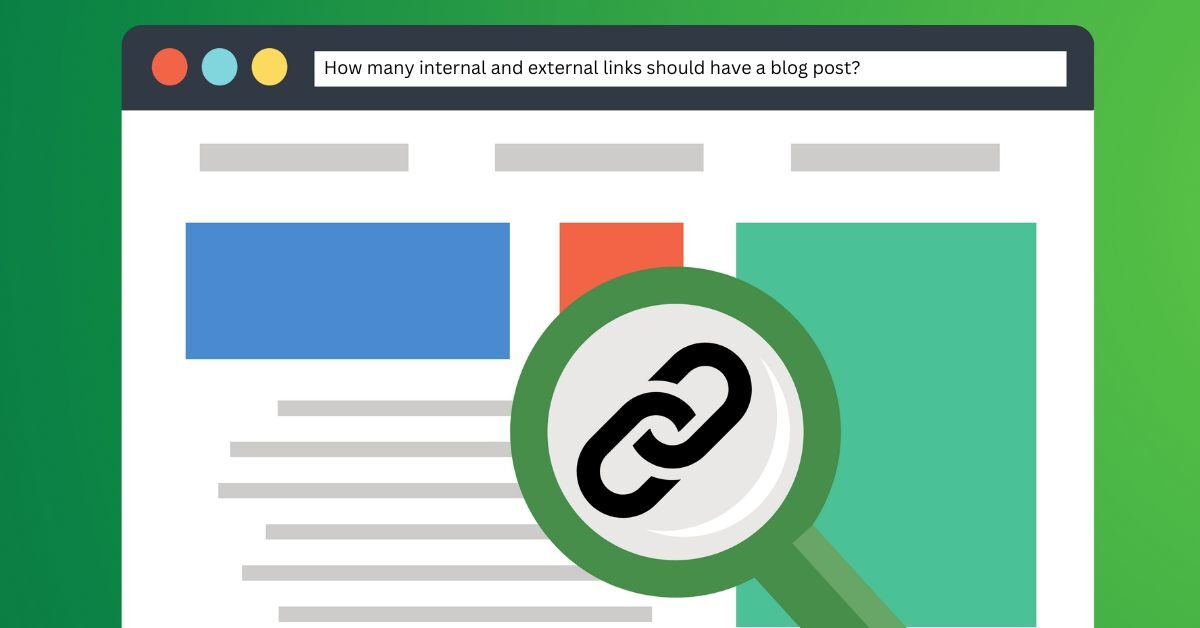In the world of blogging and content creation, using inbound and outbound links is crucial for a successful SEO strategy. Inbound links, also known as internal links, are hyperlinks that point to other pages within the same website, while outbound links, or external links, are hyperlinks that point to pages on external websites. Both links play a significant role in helping search engines understand the structure and hierarchy of your website, as well as in establishing the authority and credibility of your content.

Inbound or Internal Links
Inbound links, or internal links, are essential for guiding visitors to other relevant pages within your website. They help to establish a logical and hierarchical structure for your content, making it easier for search engines to crawl and index your website. Internal links also help to distribute page authority and ranking power throughout your site, which can ultimately improve the overall SEO performance of your website.
Outbound or External Links
On the other hand, outbound links, or external links, are equally important for SEO. They provide additional context and credibility to your content by linking to authoritative and relevant sources outside of your website. Outbound links also help to establish your website as a valuable resource within your niche and can contribute to building relationships with other websites and bloggers in your industry.
How to Use Internal and External Links in Your Blog Posts
When it comes to the number of internal links in a blog post, there is no specific rule, as it depends on various factors such as the length of your blog post, the type of content, and the overall structure of your website. However, a good rule of thumb is to aim for 2-5 internal links per 1000 words of content. This provides a good balance between providing valuable resources for your readers and avoiding over-linking.

The number of outbound links in a blog post can vary depending on the length and nature of the content. As a general guideline, it’s recommended to use outbound links sparingly and strategically. Aim to include 2-4 outbound links in a blog post of around 1000 words. This provides a balance between providing valuable external resources and avoiding excessive linking, which could potentially dilute the focus of your content. Always prioritize the relevance and quality of the external sources you link to, as this can significantly impact the credibility and value of your blog post.
Importance of Inbound and Outbound Linking
Inbound and outbound linking play crucial roles in enhancing the overall quality, credibility, and search engine optimization (SEO) performance of a website. Here’s a breakdown of the importance of both types of linking:
Importance of Inbound (Internal) Linking:
- Enhanced User Experience: Internal links guide visitors to related content within the website, facilitating seamless navigation and encouraging prolonged engagement.
- Improved Website Structure: Internal linking helps establish a logical and hierarchical structure for the website, making it easier for search engines to crawl and index the content.
- Distribution of Page Authority: By strategically linking to relevant internal pages, you can distribute page authority and ranking power throughout the website, contributing to improved SEO performance.
- Contextual Relevance: Internal links provide context and additional information to readers, enriching the overall content experience and providing opportunities for further exploration.
Importance of Outbound (External) Linking:
- Credibility and Authority: By linking to reputable and authoritative external sources, outbound links enhance the credibility and trustworthiness of the content, establishing the website as a valuable resource within its niche.
- Relationship Building: Outbound links can foster relationships with other websites, bloggers, and industry influencers, potentially leading to collaboration opportunities and backlink acquisition.
- Additional Context and Information: External links provide readers with access to further information and diverse perspectives, enriching the content and demonstrating a commitment to providing comprehensive resources.
- SEO Benefits: When used judiciously, outbound links can contribute to improved SEO performance by signaling to search engines that the content is well-researched, relevant, and connected to authoritative sources.



The design and layout of this blog are so aesthetically pleasing and user-friendly It’s a pleasure to navigate through
I appreciate how this blog promotes self-growth and personal development It’s important to continuously strive to become the best version of ourselves
Your posts always provide me with a new perspective and encourage me to look at things differently Thank you for broadening my horizons
Your posts are always so relevant and well-timed It’s like you have a sixth sense for what your readers need to hear
Your blog post had me hooked from the first sentence.
Thank you for always being open and honest with your readers It’s refreshing to see a blogger who is unafraid to be vulnerable and real
Your posts are like a breath of fresh air I appreciate how you tackle difficult topics with grace and empathy
This blog post is worth the read – trust us!
I appreciate how well-researched and detailed your posts are It’s evident that you put a lot of time and effort into providing valuable information to your readers
You have a way of making each of your readers feel seen and heard That’s a special quality that not all bloggers possess Thank you for creating a safe space for us
Your writing is so powerful and has the ability to make a real difference in people’s lives Keep using your voice to spread kindness and positivity
I’ve come across many blogs, but this one truly stands out in terms of quality and authenticity Keep up the amazing work!
Keep up the incredible work! I can’t wait to see what you write next.
Your blog has become my go-to source for positive and uplifting content Thank you for consistently delivering high-quality posts
Your positivity and optimism are contagious It’s evident that you genuinely care about your readers and their well-being
Your writing is so eloquent and persuasive You have a talent for getting your message across and inspiring meaningful change
This blog has opened my eyes to new ideas and perspectives that I may not have considered before Thank you for broadening my horizons
The design and layout of this blog are so aesthetically pleasing and user-friendly It’s a pleasure to navigate through
The photographs and visuals used in this blog are always stunning They really add a beautiful touch to the posts
Keep up the amazing work! Can’t wait to see what you have in store for us next.
Your blog is a haven of positivity and encouragement It’s a reminder to always look on the bright side and choose happiness